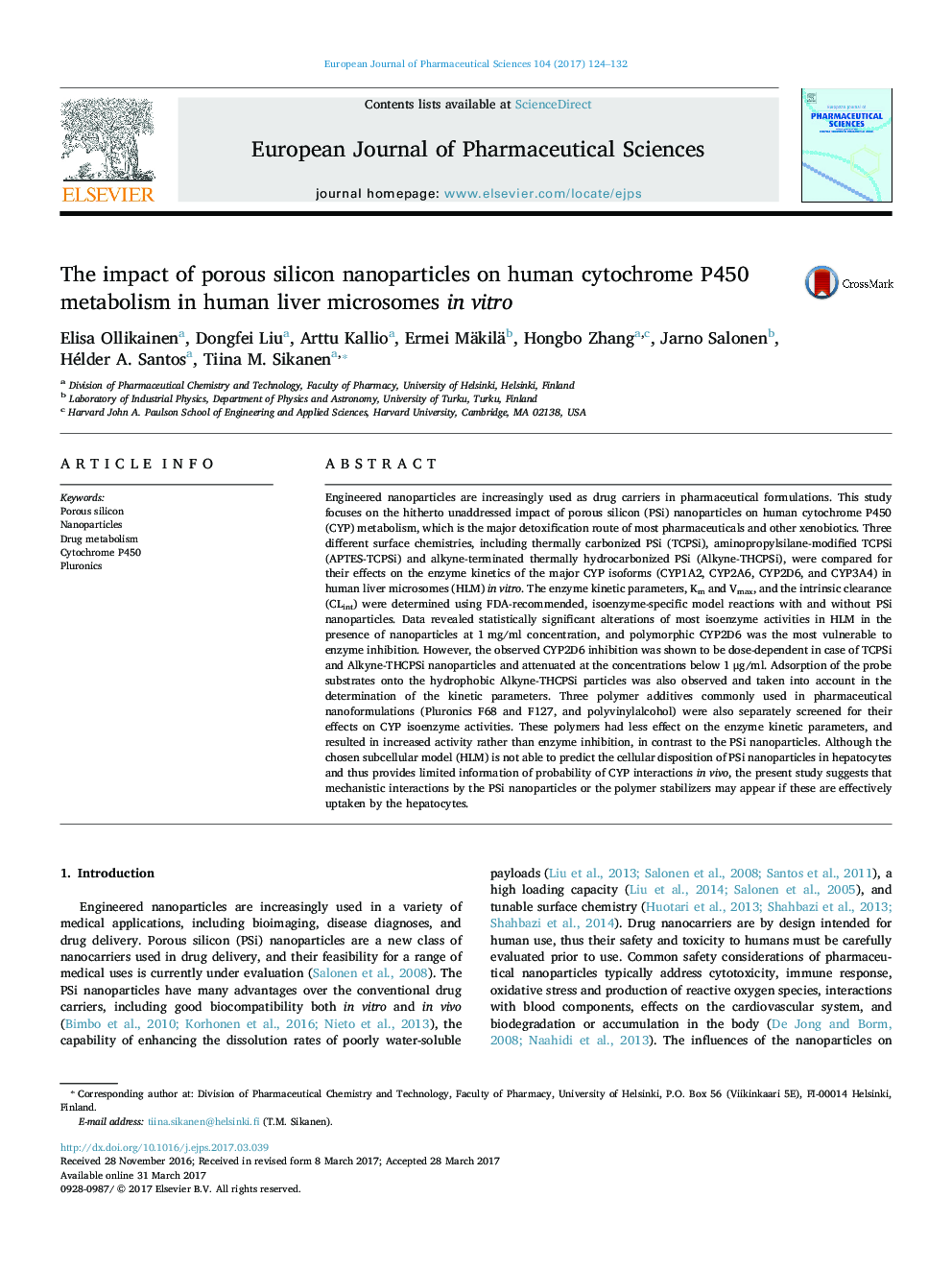| کد مقاله | کد نشریه | سال انتشار | مقاله انگلیسی | نسخه تمام متن |
|---|---|---|---|---|
| 5547623 | 1556146 | 2017 | 9 صفحه PDF | دانلود رایگان |

Engineered nanoparticles are increasingly used as drug carriers in pharmaceutical formulations. This study focuses on the hitherto unaddressed impact of porous silicon (PSi) nanoparticles on human cytochrome P450 (CYP) metabolism, which is the major detoxification route of most pharmaceuticals and other xenobiotics. Three different surface chemistries, including thermally carbonized PSi (TCPSi), aminopropylsilane-modified TCPSi (APTES-TCPSi) and alkyne-terminated thermally hydrocarbonized PSi (Alkyne-THCPSi), were compared for their effects on the enzyme kinetics of the major CYP isoforms (CYP1A2, CYP2A6, CYP2D6, and CYP3A4) in human liver microsomes (HLM) in vitro. The enzyme kinetic parameters, Km and Vmax, and the intrinsic clearance (CLint) were determined using FDA-recommended, isoenzyme-specific model reactions with and without PSi nanoparticles. Data revealed statistically significant alterations of most isoenzyme activities in HLM in the presence of nanoparticles at 1 mg/ml concentration, and polymorphic CYP2D6 was the most vulnerable to enzyme inhibition. However, the observed CYP2D6 inhibition was shown to be dose-dependent in case of TCPSi and Alkyne-THCPSi nanoparticles and attenuated at the concentrations below 1 μg/ml. Adsorption of the probe substrates onto the hydrophobic Alkyne-THCPSi particles was also observed and taken into account in the determination of the kinetic parameters. Three polymer additives commonly used in pharmaceutical nanoformulations (Pluronics F68 and F127, and polyvinylalcohol) were also separately screened for their effects on CYP isoenzyme activities. These polymers had less effect on the enzyme kinetic parameters, and resulted in increased activity rather than enzyme inhibition, in contrast to the PSi nanoparticles. Although the chosen subcellular model (HLM) is not able to predict the cellular disposition of PSi nanoparticles in hepatocytes and thus provides limited information of probability of CYP interactions in vivo, the present study suggests that mechanistic interactions by the PSi nanoparticles or the polymer stabilizers may appear if these are effectively uptaken by the hepatocytes.
165
Journal: European Journal of Pharmaceutical Sciences - Volume 104, 15 June 2017, Pages 124-132